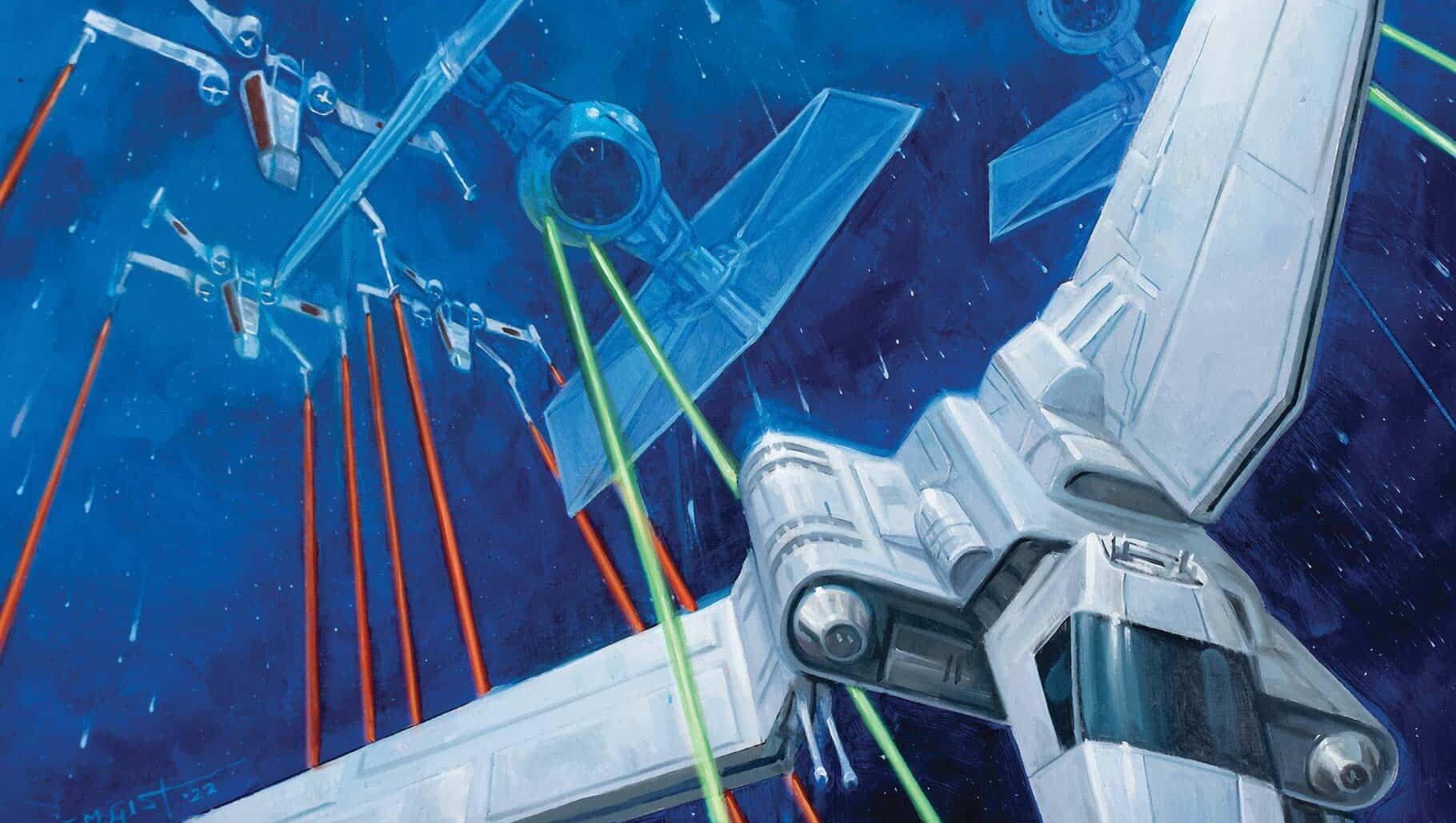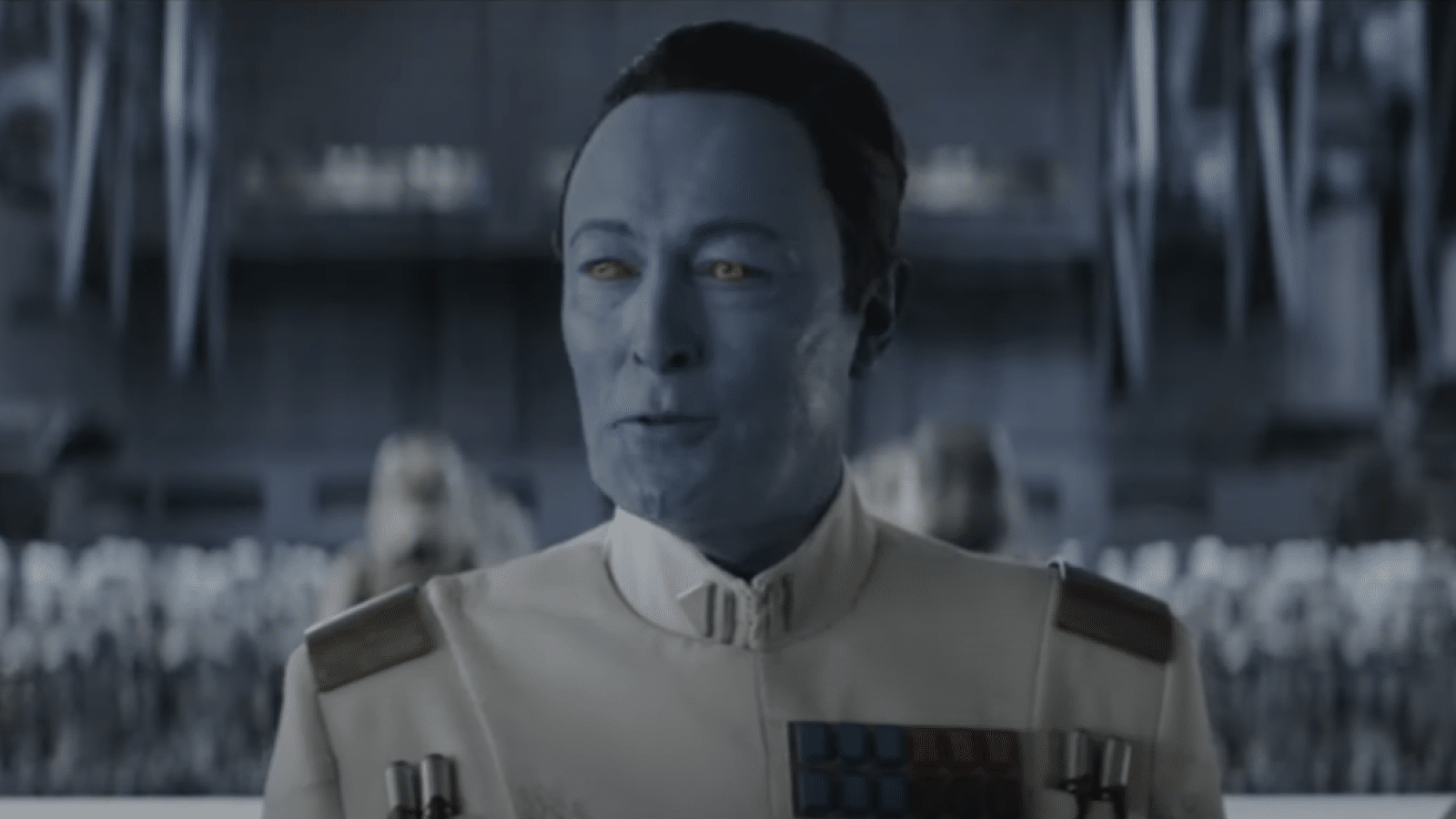Jon and Bev escape from the (second) Death Star and desperately try to get the Rebels to answer their damn phones in Star Wars #27, written by Charles Soule, art by Andrés Genolet, colored by Rachelle Rosenberg, and lettered by Clayton Cowles.
Though the tension which permeated the previous issue lingers into Star Wars #27, the tension here is much more straightforward: will the Melton family escape from the second Death Star and make contact with the Rebel Alliance?
As a result, Star Wars #27 is more of a character study than anything, with writer Charles Soule and artist Andrés Genolet providing an extended look at Jon and Bev, how they operate under pressure and how they support one another. As a character study, it works well enough, though how effective an issue of a Star Wars comic it is, is debatable.
The plot is fairly straightforward: as Bev and Jon Melton race away from the second Death Star, their cover is blown, and they engage in a furious escape from a squad of pursuing TIE Interceptors while attempting to contact the Rebellion for help. The only main series regulars who appear in Star Wars #27 are Lando – who overhears the Meltons’ calls for help while checking on Lobot, and warns off their call as an obvious trap – and Luke, who pops up on the last page to serve as the narrative device that will (seemingly) bring the Meltons and the alliance together.
Soule uses the space devoted to Jon and Bev to good effect, creating a fast impression of the married couple’s relationship that makes them feel like real people. The quick transition from shared delight when Bev seemingly manages to cover their escape to the moment of horror when Jon realizes she inadvertently slipped up and revealed that she was lying to his easy acceptance of her understandable mistake makes them feel like an actual married couple. Whether or not Soule intends to make Jon and Bev regular characters going forward or is simply using them to set up a larger plot involving the second Death Star remains to be seen, but he’s made the most of their page time thus far.
If anything, they’re such sympathetic characters that their interactions with the rebels paint the Alliance in a negative light. If not for the dire circumstances of Jon and Bev’s escape (and the fact that their young children are on board their shuttle as well, a cheap narrative technique for generating sympathy but an effective one, I’m not made of stone), the way the rebels trip over their own bureaucracy instead of just helping the Meltons would be downright comical. As it is, it’s still darkly humorous.
We tend to think of the Empire as the political entity whose strict adherence to its policies and procedures cause it to trip over itself. Yet here, the Rebels are so worried about following proper security procedures and the possibility of a trap that they offer little assistance, leaving the Meltons to fend for themselves through a series of desperate hyperspace jumps (including to Al’Doleem, the river moon Luke visited in issues #19-20), which conclude with the family crash landing in the bowels of Coruscant.
Their only hope for help from the Rebels comes, unknownst to them, via Luke’s issue-closing intervention, as he is a figure uniquely suited (due to his Force-assisted intuition and standing within the Rebellion) to cut through the tangle of procedures and see the Meltons for what they are: people in need of assistance. While this sets up the likely integration of the Meltons into the larger cast of the series going forward, for now, Star Wars #27 affirms them as the central characters of the current plot. They are the protagonists, and while the rebels aren’t exactly villains, they do little to help the heroes on their quest.
This may ultimately be off-putting. On paper, the nominal heroes of the series have been thrust into a quasi-antagonist role, while a pair of Imperial defectors dominate the narrative. The Empire is still the bad guy, but now we’ve got new good guys. For the moment though, it largely works. Soule uses the tight focus on Jon and Bev to effectively render them as relatable and sympathetic characters. There is something darkly humorous in the idea of the Rebels being so nervous and beholden to procedure than they shoot themselves in the foot, in terms of both helping people in need and acquiring vital intelligence. And the tension throughout Star Wars #27 steadily escalates, as the Melton solve one problem only to find themselves facing another.
Would I want a series (or even a whole arc) dedicated to Jon and Bev? Probably not. But taking the time to tell a story from the perspective of down-to-earth characters at a distance from the arch narratives and iconic characters of the Star Wars universe is as much a touchstone of Star Wars as X-wings and lightsabers.
Austin Gorton also reviews older issues of X-Men at the Real Gentlemen of Leisure website, co-hosts the A Very Special episode podcast, and likes Star Wars. He lives outside Minneapolis, where sometimes, it is not cold. Follow him on Twitter @AustinGorton






